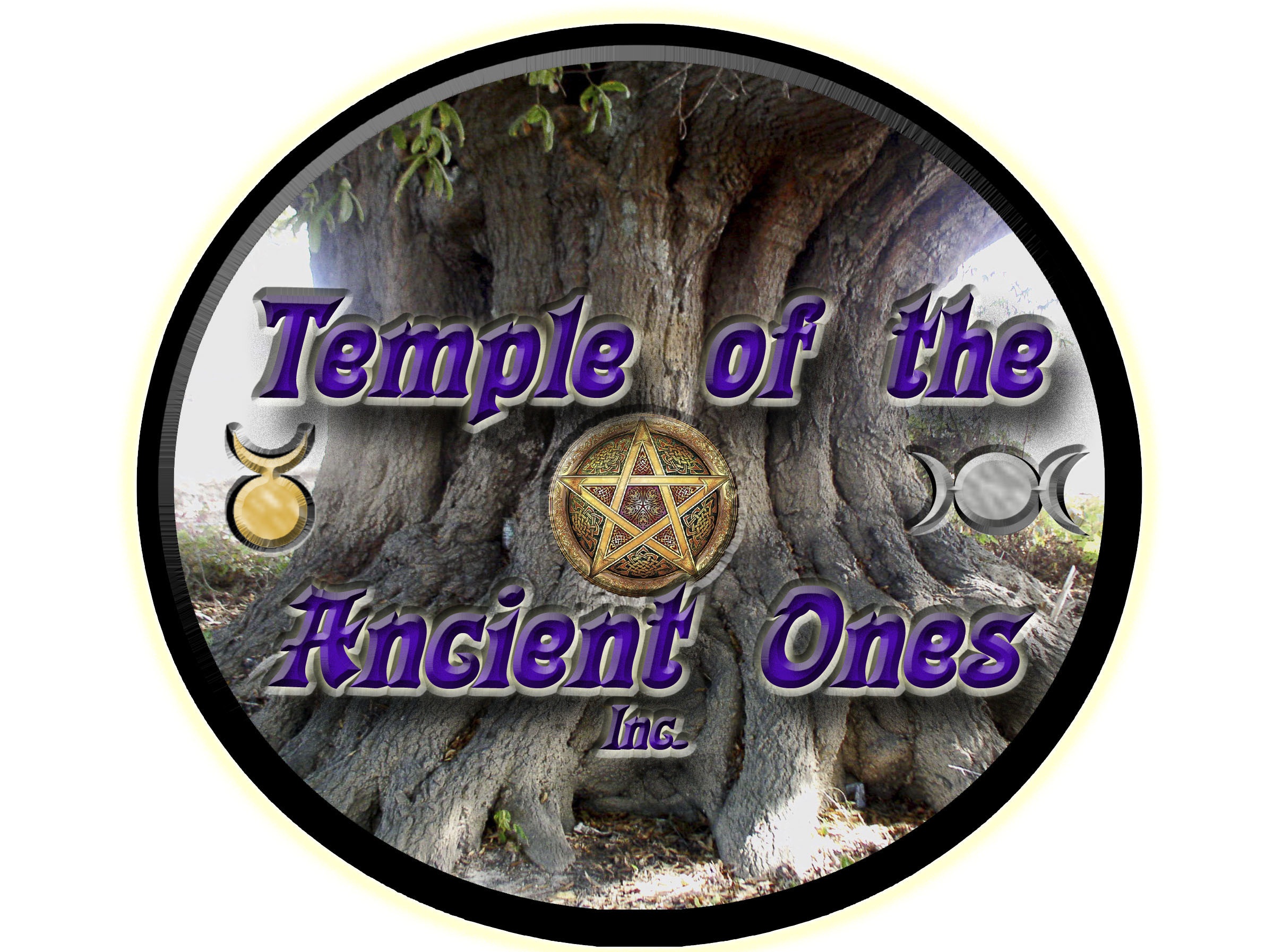
The phases of the moon are manifestations of the three forms of the Goddess. Each lunar phase carries with it its own distinct sacred purpose and spiritual meanings and lessons. The phases of the moon we honor and venerate are those which represent the Triple Goddess in her aspects as Maiden, Mother, and Crone: the New Moon (which would be the crescent moon NOT the moon in its dark phase), the Full Moon, and the Dark Moon respectively.
The Wheel of the Year
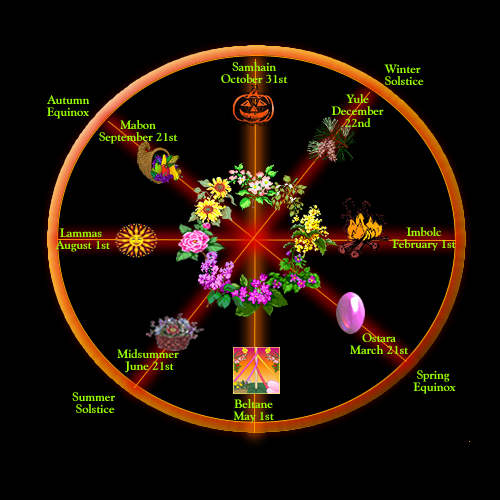
THE PAGAN CALENDAR is referred to as the Wheel of the
Year. The wheel represents a full cycle of the seasons. Each season is
marked by a series of holy days called sabbats to honor the particular
qualities of each time of the year, life’s lessons as revealed through
Nature, and our relationship with the Goddess and God. These holy days
are divided into what is termed the Greater Sabbats and the Lesser
Sabbats which reflect the themes of birth, death, and rebirth. Although
Samhain (Halloween) is considered the beginning of the Wiccan year, the
holidays are presented here in the format of the customary Western
calendar.
THE GREATER SABBATS (which actually begin at sundown of
the previous day) are Imbolc or Candlemas, Feb. 2nd (Feb.1st); Beltane
or May Eve, May 1st (Apr. 30th); Lughnasadh or Lammas, Aug. 1st ( July
31st); and Samhain, Nov. 1st (Oct. 31st.)
THE GREATER SABBATS are highly spiritual occasions,
undertaken with the greatest regard and dignity. In all Wiccan rituals
and ceremonies the sanctity and sacredness of the occasion is always
honored and respected. Because these rituals are meant to embody the
powers of Creation and our connection to the Gods, they should be
considered serious; however, this does not mean that laughter,
celebration, and joy are not present.
THE LESSER SABBATS are Yule (the Winter Solstice) which
occurs around Dec. 21st; Ostara (the Spring/Vernal Equinox) which occurs
around March 21st; Litha or Mid-Summer (the Summer Solstice) which
occurs around June 21st); and Mabon or Michaelmas (the Fall/Autumnal
Equinox) which occurs around September 21st.
THE LESSER SABBATS, although called so, are not to be
thought of as any less spiritually important or significant. These are
the points when the lessons of balance and place in time take greater
meaning.
Although Samhain is considered our New Year as it is both an ending and
a beginning, we begin with Imbolc to fit the accepted calendar year.
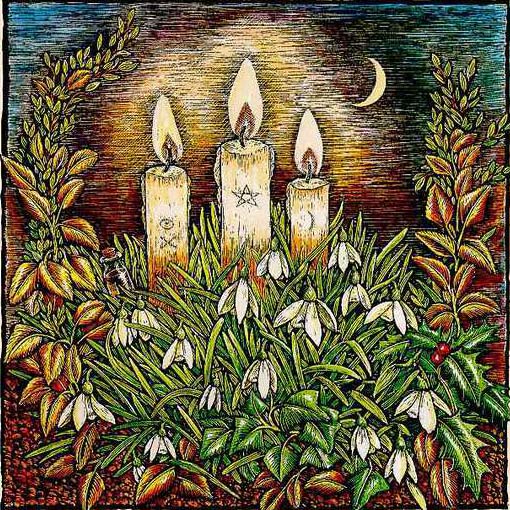
IMBOLC, (say EM-BOLK, also known by Christians as
Candlemas), a Celtic Fire Festival, is a time of reawakening, a lighting
of the way to new hope as the first quickening of the earth heralds the
beginning of Spring. The flame of the candle is a testimony to
transformation and the power of the spirit. It is a time of cleansing
and purification. It is the opportunity to expunge the things that may
stand in the way of our goals and to prepare ourselves for initiation or
rededication to deeper spirituality. Now is the time when we sow the
seeds of our life. This sabbat honors Bird (or Bride), the goddess of
inspiration, healing, and smithcraft. Goddess of sacred wells, goddess
of fire and the hearth, Her inspiration leads us to truth; Her waters
heal us; Her flame burns in our hearts. Significant symbols include the
Sacred Flame, the making of Brid’s Cross, candle lighting ceremony using
white candles, seeds.
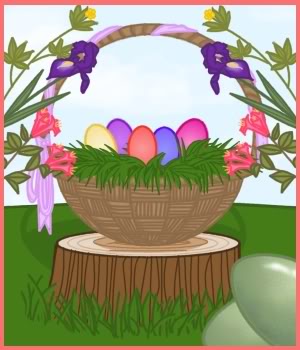
OSTARA, (say Os-Tah-Rah) the Spring Equinox, derives it name from the Goddess Eostre. The Earth is now clearly awakened from her slumber. The day and night are equal but the light is gaining; life is gaining in momentum. This is a time of feasting and celebration. There is a sense of energy and promise personified by the beauty, strength, and freedom of the young virgin Goddess. This is when the clover appears in the fields, a symbol of the rebirth of the Maiden aspect of the Triple Goddess. Significant symbols are the lamb, the hare, and the egg, all universal archetypes of fertility, renewal, and new life, and they are all sacred to Her; the decorating of the eggs with sacred symbols.
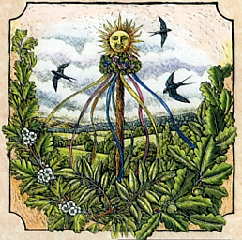
BELTANE, (say Bell-Tane, or Beal-Tine) a Celtic Fire Festival literally meaning “Bright Fire” and refers to ritual extinguishing and rekindling of all fires. Fire means warmth, life, transformation. The Sun God comes to the Earth Goddess signaling good fortune and change. It is the first day of Summer and celebrates the half of the year dedicated to growth and fertility as manifested by the sac red union of the God and Goddess. In this Sacred Marriage of the Goddess, as the land, with the young God as the force of life, the earth bursts forth with sprouting green and the tender colorful blossoms celebrating the fulfillment of their passion, calling us all to participate in their gladness. This is a celebration of life above all! Significant symbols include the bonfire as represented by a candle lit ritual using red candles, maypole with ribbons, and the hawthorn.
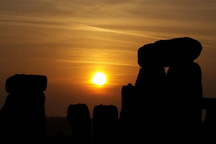
LITHA, (say Lee-Thuh) the Summer Solstice, represents the time of fulfillment. The God and Goddess are wrapped in the ecstasy of their union. Midsummer is one of the significant turning points in the year. The sun is in the highest point in the heavens. However, there is also a change. Once the God has reached his zenith the dark begins to grow; the God begins to become introspective and to accept that his path leads to sacrifice and death. The Goddess must prepare herself for Cronehood. Nothing is certain but change and change is the basis of life. This is a time of celebration of the earth in full glory but it is also a time for the realization that change is inevitable and an anticipation of the harvest to come. Significant symbols are the making of Sun Wheel on a Solar Disk, bonfires as represented by candles, flower wreaths.
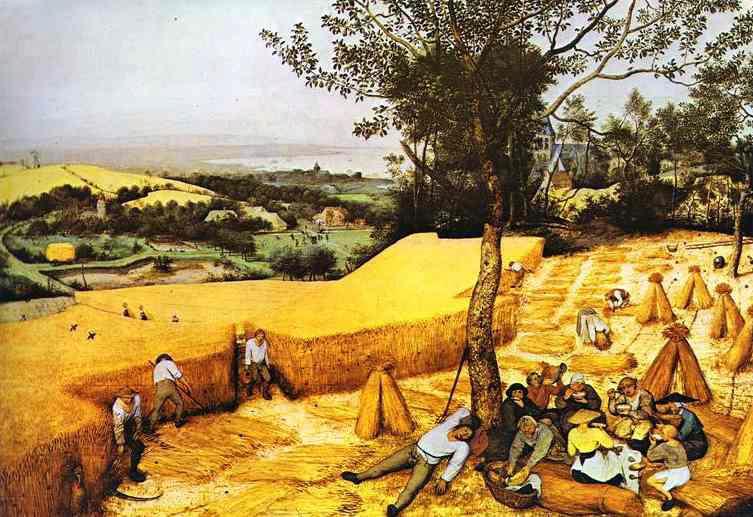
LUGHNASADH, (say Loo-Nah-Suh, or Lah-Mass) the Festival of Sacrifice (also known as LAMMAS) is the first of the three Celtic harvest festivals; the grain (or corn) harvest. The union of the God and Goddess gave birth to the bounty of the earth. This is a time of great joy but no longer is the God the virile groom of Beltane nor the Goddess the young Bride. Now He is in the Autumn of life and She the Great Mother who uses Her power to bring forth a bountiful harvest. Now is the time that we, too, reap the harvest our our own seeds that were sown at Imbolc. The God personifies the the Spirit of Nature that dies each Autumn, while the Goddess is the principle of Eternal Life. Now the God is the Spirit of the Grain; willingly cut down, he is a sacrifice for the sake of the living. His spirit descends into the Earth, the womb of the Goddess, waiting to be reborn at Yule. This is a bitter-sweet time. Death is incomprehensible but the God and Goddess speak to parts of us that are deeper and higher, helping us to feel peaceful and in harmony with this eternal process. Sacred symbols include the making of a corn wheel and the corn dolly, wheat, the loaf.
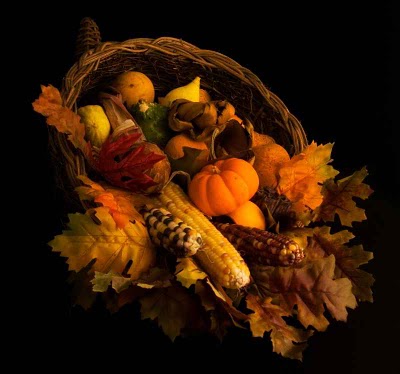
MABON, (say May-Bahn) the Autumn Equinox is the second
of three harvests and a time of delicate balance between light and dark.
Now is the time for gathering nuts, berries, and fruits of the vine. It
heralds the need for valuing, storing, conserving. It is a time to
recognize our blessings and to honor and thank the Goddess and the God.
Mabon is the traditional time for celebrations of thanksgiving and
harvest festivals. The Goddess is the Harvest Queen but the God’s
presence is shadowy; he is deep within the Underworld. He is heard in
each sigh of the wind and glimpsed in the shades of early dusk. He leads
us to the hidden, inward places of our souls and invites us to explore.
It is time to make room for contemplation on the quest for balance.
Significant symbols include nuts, berries, and grapes, the making of
God’s Eye talisman, apples/apple disks cut to reveal the pentacle; the
making of hazelnut divination pendulums.
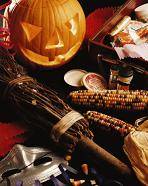
SAMHAIN, (say Sow-in or Sam-hain) or Halloween, the
final harvest, is indeed our most holy and sacred Sabbat. The commencing
of the season of darkness, it is the festival of Death, and as so it is
the celebration of the of the Eternal Cycle for without death there can
be no rebirth. This is the time that the new cycle truly begins. The
spirit of the God has descended into the Underworld and the Sun Child is
growing within the Goddess, waiting in the depths of the Earth to be
reborn at Yule. It is the time when the Goddess is in Her aspect as
Crone. She is Destroyer and Healer, Wise Woman and Midwife of
Transformation. Her cauldron is the great womb in which all things are
conceived, grow, and are born. Samhain is the time of introspection, it
is the time to assess and re-tune ourselves to the beliefs in the
oneness of all spirits, and in our firm resolution that physical death
is not the final act of existence. The veil between the worlds is at its
thinnest and the consciousness which separates the land of the living
from the land of the dead. We remember and honor our loved ones and
ancestors; we release the spirits of those we have lost. We mourn but we
rejoice. We laugh, feast, tell stories, sing…for this is the triumph of
Life! Symbols include the lighting and ritual extinguishing of candles,
the cauldron, the web, black candles, the practice of all forms of
divination.
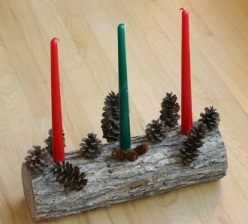
YULE, the Winter Solstice, is the season of Midwinter
festivities and the return of the sun and light. The God as Sun Child is
reborn of the Virgin Goddess. We honor the birth of Life and the first
hopeful glimmer of light that confirms renewal. Participating in the
magic of Yule enables us to join in with the potential for rebirth and
to be part of the cycle which is central to our existence. Only the
Sabbat of Samhain is as rich in sacred symbolism. The evergreen tree,
sacred to the Goddess who never dies, represents the uniting of the
Underworld, the world of humankind, and the Gods. The wreath is a symbol
of the Wheel of the Year ever changing, never-ending. This time of
joyousness is also a time of reverent reflection on the gifts of the
Goddess. Significant symbols include the making of the Yule Log and the
ritual lighting of it’s candles, the ceremony of lighting Solstice
candles, holly and ivy.
| HOME | ABOUT US | CONTACT US | MEMBERSHIP | What We Offer |